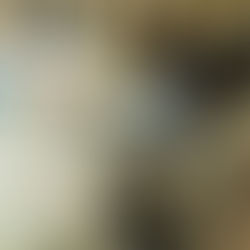We Don’t DO Design. Can we exclude it from our ISO certification?
- PQA Certification
- Jun 11, 2020
- 3 min read
What do you think of when asked if you do design--engineers? Original concept development? What about processes development? Or reverse engineering? While this is always a hotly disputed and needlessly feared area of ISO 9001 requirements, it has a much wider application than most of us initially assume. Here is the definition of design found in ISO 9000:2005:3.4.4: design and development is a set of processes (3.4.1) that transforms requirements (3.1.2) into specified characteristics (3.5.1) or into the specification (3.7.3) of a product (3.4.2), process (3.4.1) or system (3.2.1)
NOTE 1: The terms “design” and “development” are sometimes used synonymously and sometimes used to define different stages of the overall design and development process.
NOTE 2: A qualifier can be applied to indicate the nature of what is being designed and developed (e.g. product design and development or process design and development).
There are a lot of nuances in there. Many different types of engineers are all involved in design (not only mechanical, electrical and software but also, by ISO’s definition, process engineers and system engineers).
You know you’re involved in Design if… …you take a physical sample and do reverse engineering. Since you are transforming requirements into characteristics or specs for manufacture, you do design.
…you take an existing design and modify it for improved performance or alternate application. Since you are changing the specifications of the product, you do design changes, therefore, design.
…you receive concept, application and functional requirements from which you create the specifications for a product; this is product design.
…you receive specifications, and you define the steps and activities of your process; this is process design (even though you are not doing product design).
…you develop the requirements and specific characteristics of a system (even though you don’t make a thing); this is system design.
…you have an idea and identify functional, physical or operational characteristics and then pass it off to someone else to develop the physical specifications; this is product design (but maybe not development).
…you do Research and Development and define by trial and error what characteristics you can make your product meet; this is development (which is part of design & development).
… you create training curriculum and tests to evaluate comprehension; this is process design. …you develop and plan an event and specify characteristics or performance criteria for suppliers; this is system design.
Does everyone do design or development in some form?
Many people do--we usually refer to it as “figuring it out.”
Why is this important?
There’s a trend within manufacturing to exclude design and development by saying “we don’t do design because we don’t sell anything we create specifications for under our company name; it’s just a value added service we provide to our customers” or “we sell and assemble it, but we subcontract the engineering, even though we own the patent.” There are a few flaws in this logic:
There’s no reference to sales or branding or patent ownership within the ISO definition of design and development.
Section 3.4.2 of ISO 9000:2005 defines Product as “result of a process. There are four generic product categories: services, software, hardware, processed materials” (service is then further explained as a product with many examples; it is definitely worth reading). This means that adding value to a contract by providing contract engineering service is a product. As a product, all steps of the design and development process are required (and, therefore, should be controlled within 7.3 of the QMS) even though the final owner of the design may be a customer.
Section 4.1 of ISO 9001:2008 requires you to control all outside processes. If you contract out the design, but then sell it under your own label, you are responsible for the completeness of all supporting documentation and records of verification and validation related to the product design before you go to production.
How do I know what, if anything, I can exclude from my certification?
You can define the type of design you do or don’t do. See note #2 of the ISO definition at the beginning. For example,
if the customer provides all the characteristics and specifications and you just develop the process to make it happen--you do process design, but can exclude product design.
if you design a product and then pass it on to the suppliers who figure out how to make it to those specifications, you can exclude process design.






















